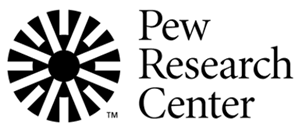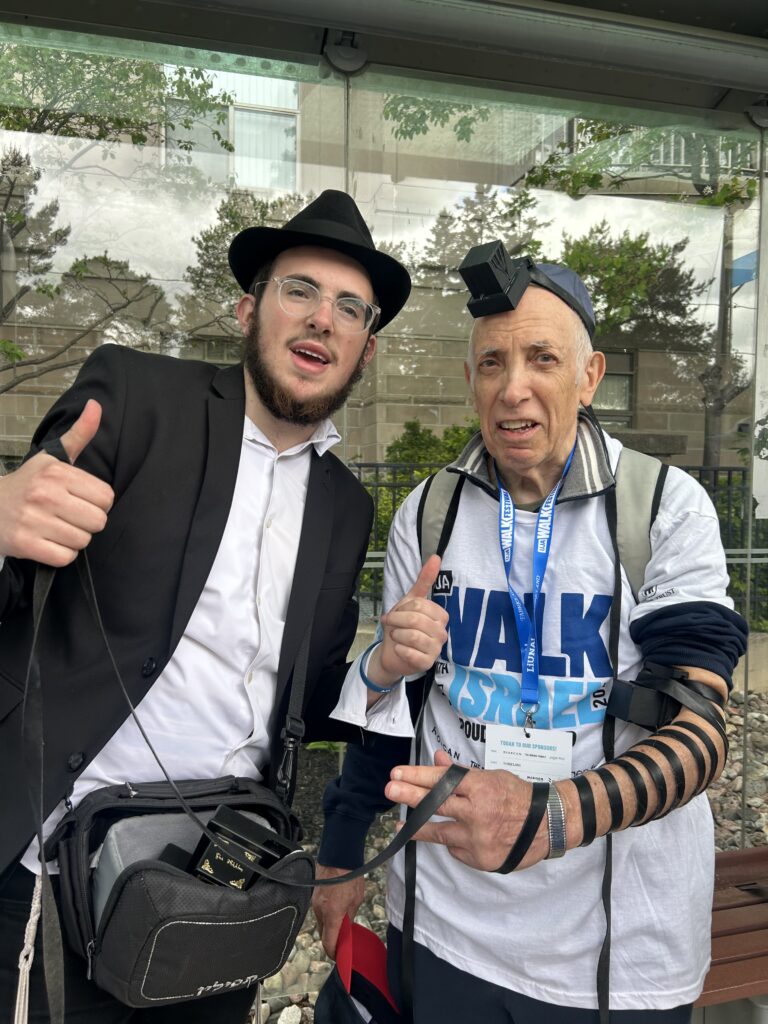Uncategorized
4 Hanukkah recipes from across Asia that meld local cultures with Diaspora traditions
TAIPEI (JTA) — Asian-Jewish cuisine is a complex tapestry.
Jewish communities have existed across Asia for longer than many might assume, especially near major historical trade routes in places such as India, Singapore and Indonesia. Other communities developed during and after World War II. Some were part of or assimilated into local cultures, while others blended culinary traditions from other lands with the cuisines of their new homes.
So what do Jews in various parts of Asia eat on Hanukkah? Jews hailing from India, Singapore, Indonesia and Japan spoke to the Jewish Telegraphic Agency about some of their go-to holiday recipes.
Jeremy Freeman’s negi latkes use a type of onion native to China and grown across East Asia. (Jeremy Freeman)
Tokyo, Japan: Negi latkes
Before moving to Japan with his wife, Maiko, five years ago, Jeremy Freeman was selling vintage Jamaican records in New York City. In fact, Maiko was the one with the restaurant — Oni Sauce, a Japanese home-style food stand in Brooklyn’s Smorgasburg market.
But when the two made the move to Tokyo with their kids, they decided to switch it up. Freeman’s Jewish background takes the stage at their Tokyo restaurant, Freeman’s Shokudo — specifically, the smoky side: Freeman’s specializes in smoked fish and meats with a rotating seasonal menu. They often dabble in Japanese-Jewish fusion, with offerings like the bialy (made on request by a local Japanese bakery) with whitefish salad made from smoked saba (mackerel), smoked daikon pickles and tobiko, or flying fish roe.
On Hanukkah, Freeman whips up these potato latkes made with negi, a type of onion native to China and grown across East Asia, that falls somewhere between a scallion and a leek. Negi has a stronger flavor than white onions typically used in latkes, and they also produce a lot less water, creating a batter that’s cleaner and easier to work with. At Freeman’s Shokudo, they’re topped with creme fraiche, tobiko, and ikura or salmon roe.
Recipe
Ingredients
2 large potatoes
2 negis (Japanese leeks)
2 eggs
1/2 cup matzah meal
Tobiko
Ikura (salmon roe)
Dill
Sour cream
Directions
Grate potatoes with the large hole side of a box grater. Use your hands to squeeze out as much liquid as possible.
Chop negi into thin slices as you would with scallion. Mix with potatoes and add the two eggs (beaten) and matzah meal. Season with salt and black pepper.
Heat skillet or cast iron pan with safflower oil. Add a drop of the potato mixture to test oil temperature. When it sizzles, the oil is ready. In batches, so as to not crowd the pan, add potato mixture in a thin layer for pancakes about the size of a palm. When browned on one side, flip the pancake. Make sure the pan does not get too hot.
To serve, add a dollop of sourcream and top with ikura and tobiko and a sprig of dill.
Rosita Goldstein says Indonesian and Jewish cooking go hand in hand. (Rosita Goldstein)
Singapore/Indonesia: Deep-fried corn fritters
Rosita Goldstein’s Saturday morning Shabbat meals have become something of a local legend among Singapore’s Jewish community. Twice a month for a decade, she hosted anywhere from 30 to 100 community members at her home, where she prepared abundant spreads of Jewish and Indonesian classics now memorialized in a cookbook.
Goldstein, who is originally from Indonesia and converted to Judaism after meeting her husband, Harvey, in Singapore, says culinary traditions from Indonesia meld easily with kashrut, or Jewish culinary rules.
“A lot of recipes don’t use pork,” she said. “And then second of all, in the Jewish tradition, we don’t mix meat and dairy, and it’s very easy, because in most of Indonesian food, we use coconut milk.”
Life is a little slower now for the Goldsteins, who recently moved to Virginia and hope to split their time between the United States and Singapore. On Hanukkah, these deep-fried Indonesian corn fritters, served best with sour cream and sweet chili sauce, are a family favorite. In Indonesia, they’re a popular street food, but they are also a nod to the Hanukkah custom of frying in lots of oil.
Recipe
Ingredients
2 cups fresh or frozen corn kernels
1 cup all-purpose flour
1/4 teaspoon baking soda
1/2 teaspoon garlic powder
1/2 cup thinly sliced spring onion
1/4 cup chopped celery leaves
1 large egg
1 cup water
Oil, enough to deep fry the corn fritters.
White ground pepper, and salt to taste.
Directions
In a mixing bowl, mix the ingredients together until the flour, baking soda, garlic powder, white pepper, salt, egg and water are all well combined.
Add the corn kernels, spring onions, and celery. Mix it well.
Heat the oil in the pan. Using a spoon or small ladle, spoon portions of batter into the hot oil and fry. . Do not overcrowd the pan. Cook both sides of the corn fritters until golden brown.
Serve with sour cream and sweet chili sauce.
Esther David serves her vegetable patties with coriander chutney on Hanukkah. (Esther David)
Gujarat, India: Vegetable patties with coriander chutney
According to legend, the Bene Israel trace their beginnings in India to a shipwreck on the country’s west coast over 2,000 years ago. When British rule began in 1858, they came to Gujarat, a state on the coast and embraced local life there while maintaining their Jewish identity, leading to the formation of unique customs and culinary traditions.
Esther David is a Bene Israel Jew who grew up in Gujarat and writes about the Jewish Indian experience in her novels. Her most recent book, “Bene Appetit,” recounts the diverse traditions and cuisines of India’s five Jewish groups — traditions she says are quickly being forgotten due to modernization and immigration.
At Hanukkah, fried vegetable patties or fritters are traditional, usually served alongside carrot halva. David likes to serve the fritters with coriander chutney.
Recipes
Vegetable patty ingredients
6 potatoes
½ cup green peas
¼ teaspoon red chili powder
½ teaspoon cumin powder
1 tablespoon chopped coriander leaves
Salt to taste
Eggs, breadcrumbs, flour and oil for frying
Instructions
Peel potatoes and shell green peas. Cook both until soft.
Mash the potatoes and combine with peas. Add red chili powder, cumin powder, coriander leaves and salt to taste. Mix with oiled hands. Divide the mixture into equal portions and shape into round patties. (Optional: add 1 small grated carrot to the mixture of potatoes and peas.)
In another bowl, whisk eggs until frothy and dip each patty in the egg mixture. Then roll in a platter of flour and breadcrumbs and cover on both sides.
Heat oil in a pan and fry patties on both sides until golden brown. Drain and serve hot.
Coriander chutney ingredients
1 small bunch fresh coriander leaves
10 leaves fresh mint
1 medium green chili
½ cup grated coconut
¼ teaspoon sugar
Salt
Instructions
Clean and finely chop the coriander, mint leaves and green chili. Mix with the grated coconut, sugar and salt. Process in a mixer and serve with the patties.
Brod goreng means “fried bread” in Indonesian. (Screenshot from YouTube/Beqs Kitchen)
North Sulawesi, Indonesia: Brod Goreng
The Jewish community in North Sulawesi, Indonesia, might be one of the smallest in all of Asia. Made up mostly of descendants of Dutch Jews who came to Indonesia with the Dutch East India Company in the 17th century, the population has declined over time as Jews have attempted to assimilate amid an environment that is not always welcoming to them. In 2013, a historical Dutch synagogue in Surabaya, on the island of Java, was demolished by a real estate developer following protests by Islamic groups.
Yaakov Baruch, the rabbi for North Sulawesi’s community, is a descendant of both Dutch Jews and Holocaust survivors. He shared a recipe for brod goreng, a sweet fried bread for Hanukkah.
A Dutch-Indonesian culinary creation, brod goreng was only eaten in areas where Dutch Jews were living, Baruch said. “The Jews combined the culinary [traditions] between European and local Indonesian food, since this food is closer with sufgiyanot,” he said. “So the Jews in this country always prepare this ‘brod goreng’ next to our Menorah during Hanukkah.”
Recipe
Ingredients
250g flour
1 egg
5 tbsp sugar (you can add more if you like it sweet)
1 tsp yeast
2 tbsp butter
Water
Oil for frying
Directions
Beat sugar, eggs, butter until slightly white. Add flour & yeast, then add water little by little while stirring, until there are no lumps. Leave it for about 30 minutes, covered with a napkin.
Heat enough oil to submerge the portions. Before frying, stir the mixture for a while, then use a tablespoon to spoon pieces one by one into the cooking oil. They will be sticky when taking them off of the spoon. Fry until golden brown. (Optional: serve with powdered sugar.)
—
The post 4 Hanukkah recipes from across Asia that meld local cultures with Diaspora traditions appeared first on Jewish Telegraphic Agency.
Uncategorized
How the Global Religious Landscape Changed from 2010 to 2020

Muslims grew fastest; Christians lagged behind global population increase
• Christians are the world’s largest religious group, at 28.8% of the global population. They are a majority everywhere except the Asia-Pacific and Middle East-North Africa regions. Sub-Saharan Africa has surpassed Europe in having the largest number of Christians. But Christians are shrinking as a share of the global population, as millions of Christians “switch” out of religion to become religiously unaffiliated.

• Muslims are the world’s second-largest religious group (25.6% of the world’s population) and the fastest-growing major religion, largely due to Muslims’ relatively young age structure and high fertility rate. They make up the vast majority of the population in the Middle East-North Africa region. In all other regions, Muslims are a religious minority, including in the Asia-Pacific region (which is home to the greatest number of Muslims).

• The religiously unaffiliated population is the world’s third-largest religious category (24.2% of the global population), after Christians and Muslims. Between 2010 and 2020, religiously unaffiliated people grew more than any group except Muslims, despite their demographic disadvantages of an older age structure and relatively low fertility. The unaffiliated made up a majority of the population in 10 countries and territories in 2020, up from seven a decade earlier.
• Hindus are the fourth-largest religious category (14.9% of the world’s population), after Christians, Muslims and religiously unaffiliated people. Most (99%) live in the Asia-Pacific region; 95% of all Hindus live in India alone. Between 2010 and 2020, Hindus remained a stable share of the world’s population because their fertility resembles the global average, and surveys indicate that switching out of or into Hinduism is rare.
• Buddhists (4.1% of the world’s population) are the only group in this report whose number declined worldwide between 2010 and 2020. This was due both to religious disaffiliation among Buddhists in East Asia and to a relatively low birth rate among Buddhists, who tend to live in countries with older populations. Most of the world’s Buddhists (98%) reside in the Asia-Pacific region, the birthplace of Buddhism.
• Jews, the smallest religious group analyzed separately in this report (0.2% of the world’s population), lagged behind global population growth between 2010 and 2020 – despite having fertility rates on par with the global average – due to their older age structure. Most Jews live either in North America (primarily in the United States) or in the Middle East-North Africa region (almost exclusively in Israel).
These are among the key findings of a Pew Research Center analysis of more than 2,700 censuses and surveys, including census data releases that were delayed due to the coronavirus pandemic. This report is part of the Pew-Templeton Global Religious Futures project, which analyzes global religious change and its impact on societies around the world. Funding for the Global Religious Futures project comes from The Pew Charitable Trusts and the John Templeton Foundation.
Uncategorized
Antisemitism in some unlikely places in America

By HENRY SREBRNIK Antisemitism flourishes in a place where few might expect to confront it – medical schools and among doctors. It affects Jews, I think, more emotionally than Judeophobia in other fields.
Medicine has long been a Jewish profession with a history going back centuries. We all know the jokes about “my son – now also my daughter – the doctor.” Physicians take the Hippocratic Oath to heal the sick, regardless of their ethnicity or religion. When we are ill doctors often become the people who save us from debilitating illness and even death. So this is all the more shocking.
Yes, in earlier periods there were medical schools with quotas and hospitals who refused or limited the number of Jews they allowed to be affiliated with them. It’s why we built Jewish hospitals and practices. And of course, we all shudder at the history of Nazi doctors and euthanasia in Germany and in the concentration camps of Europe. But all this – so we thought – was a thing of a dark past. Yet now it has made a comeback, along with many other horrors we assume might never reappear.
Since the Hamas attack on Israel on October 7, 2023, there has been a resurgence of antisemitism, also noticeable in the world of healthcare. This is not just a Canadian issue. Two articles on the Jewish website Tablet, published Nov. 21, 2023, and May 18, 2025, spoke to this problem in American medicine as well, referencing a study by Ian Kingsbury and Jay P. Greene of Do No Harm, a health care advocacy group, based on data amassed by the organization Stop Antisemitism. They identified a wave of open Jew-hatred by medical professionals, medical schools, and professional associations, often driven by foreign-trained doctors importing the Jew-hatred of their native countries, suggesting “that a field entrusted with healing is becoming a licensed purveyor of hatred.”
Activists from Doctors Against Genocide, American Palestinian Women’s Association, and CODEPINK held a demonstration calling for an immediate cease-fire in Gaza at the Hart Senate Office Building in Washington, D.C., Nov. 16, 2023, almost as soon as the war began. A doctor in Tampa took to social media to post a Palestinian flag with the caption “about time!!!” The medical director of a cancer centre in Dearborn, Michigan, posted on social media: “What a beautiful morning. What a beautiful day.” Even in New York, a physician commented on Instagram that “Zionist settlers” got “a taste of their own medicine.” A Boston-based dentist was filmed ripping down posters of Israeli victims and a professor at the University of Pennsylvania Perelman School of Medicine did the same. Almost three-quarters of American medical associations felt the need to speak out on the war in Ukraine but almost three-quarters had nothing to say about the war in Israel.
Antisemitism in academic medical centres is fostering noxious environments which deprive Jewish healthcare professionals of their civil right to work in spaces free from discrimination and hate, according to a study by the Data & Analytics Department of StandWithUs, an international, non-partisan education organization that supports Israel and fights antisemitism.
“Academia today is increasingly cultivating an environment which is hostile to Jews, as well as members of other religious and ethnic groups,” StandWithUs director of data and analytics, and study co-author, Alexandra Fishman, said on May 5 in a press release. “Academic institutions should be upholding the integrity of scholarship, prioritizing civil discourse, rather than allowing bias or personal agendas to guide academic culture.”
The study, “Antisemitism in American Healthcare: The Role of Workplace Environment,” included survey data showing that 62.8 per cent of Jewish healthcare professionals employed by campus-based medical centres reported experiencing antisemitism, a far higher rate than those working in private practice and community hospitals. Fueling the rise in hate, it added, were repeated failures of DEI (diversity, equity, and inclusion) initiatives to educate workers about antisemitism, increasing, the report said, the likelihood of antisemitic activity.
“When administrators and colleagues understand what antisemitism looks like, it clearly correlates with less antisemitism in the workplace,” co-author and Yeshiva University professor Dr. Charles Auerbach reported. “Recognition is a powerful tool — institutions that foster awareness create safer, more inclusive environments for everyone.”
Last December, the Data & Analytics Department also published a study which found that nearly 40 per cent of Jewish American health-care professionals have encountered antisemitism in the workplace, either as witnesses or victims. The study included a survey of 645 Jewish health workers, a substantial number of whom said they were subject to “social and professional isolation.” The problem left more than one quarter of the survey cohort, 26.4 per cent, “feeling unsafe or threatened.”
The official journal of the Alliance for Academic Internal Medicine concurs. According to “The Moral Imperative of Countering Antisemitism in US Medicine – A Way Forward,” by Hedy S. Wald and Steven Roth, published in the October 2024 issue of the American Journal of Medicine, increased antisemitism in the United States has created a hostile learning and practice environment in medical settings. This includes instances of antisemitic behaviour and the use of antisemitic symbols at medical school commencements.
Examples of its impact upon medicine include medical students’ social media postings claiming that Jews wield disproportionate power, antisemitic slogans at the University of California, Los Angeles (UCLA) David Geffen School of Medicine, antisemitic graffiti at the University of California, San Francisco (UCSF) Cancer Centre, Jewish medical students’ exposure to demonization of Israel diatribes and rationalizing terrorism; and faculty, including a professor of medicine at UCSF, posting antisemitic tropes and derogatory comments about Jewish health care professionals. Jewish medical students’ fears of retribution, should they speak out, have been reported. “Our recent unpublished survey of Jewish physicians and trainees demonstrated a twofold increase from 40% to 88% for those who experienced antisemitism prior to vs after October 7,” they stated.
In some schools, Jewish faculty are speaking out. In February, the Jewish Faculty Resilience Group at UCLA accused the institution in an open letter of “ignoring” antisemitism at the School of Medicine, charging that its indifference to the matter “continues to encourage more antisemitism.” It added that discrimination at the medical school has caused demonstrable harm to Jewish students and faculty. Student clubs, it said, are denied recognition for arbitrary reasons; Jewish faculty whose ethnic backgrounds were previously unknown are purged from the payrolls upon being identified as Jews; and anyone who refuses to participate in anti-Zionist events is “intimidated” and pressured.
Given these findings, many American physicians are worried not only as Jewish doctors and professionals, but for Jewish patients who are more than ever concerned with whom they’re meeting. Can we really conceive of a future where you’re not sure if “the doctor will hate you now?”
Henry Srebrnik is a professor of political science at the University of Prince Edward Island.
Uncategorized
The 2025 Toronto Walk (and talk ) for Israel

By GERRY POSNER There are walks and then there are walks. The Toronto UJA Walk for Israel on May 25, 2025 was one of a kind, at least as far as Canada and Jews are concerned. The number of people present was estimated to be 56,000 people or 112,000 total shoes. (How they get to that number is bewildering to me, since there is no one counting). This was 6,000 more than last year. Whether it is true or not, take it from me, it was packed. The synagogues in Canada should be so fortunate to get those numbers in total on High Holidays. The picture here gives you a sense of the size of the crowd.

This was my first walk in Toronto for Israel and I was with my granddaughter, Samantha Pyzer (not to forget her two friends whom she managed to meet at the site, no small feat, even with iPhones as aids). The official proceedings began at 9:00 a.m. and the walk at 10:00 a.m. There was entertainment to begin with, also along the way, and at the finish as well. The finish line this year was the Prosserman Centre or the JCC as it often called. The walk itself was perhaps 4 kilometres – not very long, but the walking was slow, especially at the beginning. There were lots of strollers, even baby carriages, though I did not see any wheelchairs. All ages participated on this walk. I figured, based on what I could see on the faces of people all around me that, although I was not the oldest one on the walk, I bet I made the top 100 – more likely the top 20.
What was a highlight for me was the number of Winnipeggers I met, both past and present. Connecting with them seemed to be much like a fluke. No doubt, I missed la lot of them, but I saw, in no particular order (I could not recall the order if my life depended on it): Alta Sigesmund, (who was, a long time ago, my daughter Amira’s teacher), Marni Samphir, Karla Berbrayer and her husband Dr. Allan Kraut and family. Then, when Samantha and I made it to the end and sat down to eat, I struck up a conversation with a woman unknown to me and as we chatted, she confirmed her former Winnipeg status as a sister-in- law to David Devere, as in Betty Shwemer, the sister of Cecile Devere. I also chanced upon Terri Cherniack, only because I paused for a moment and she spotted me. As we closed in near the finish, I met ( hey were on their way back), Earl and Suzanne Golden and son Matthew, as well as Daniel Glazerman. That stop caused me to lose my granddaughter and her pals. Try finding them amid the noise and size of the crowd – but I pulled it off.

As I was in line to get food, I started chatting with a guy in the vicinity of my age. I dropped the Winnipeg link and the floodgates opened with “ Did I know Jack and Joanie Rusen?” So that was an interesting few minutes. And I was not too terribly surprised to come across some of my Pickleball family. All of these meetings, along with spotting some of my sister’s family and other cousins, were carried on with the sound of the shofar as we moved along the way. In short, this was a happening. Merchants selling a variety of products, many of them Israeli based, were in evidence and, of course, the day could not have ended without the laying of tefillin, aided by Chabad, who have perfected the procedure to take less than a minute. See the photo. Chabad had a willing audience.
Aside from the joy of sharing this experience with my granddaughter, the very presence of all these Jews gathered together for a common reason made this day very special to me. However, there was a downside to the day. The downside was that, as we began to walk back to our car there was no other way I could figure out how to return when the rains came and came. While we walked faster, we were impeded by pouring rain and puddles. But Samantha wanted to persevere, as did I. We made it, but were drenched. My runners are still drying out as I write this two days later.
What with being surrounded by 56,000 people, the noise, the slow walking, and the rain, I can still say the day was a real highlight for me – one of the better moments since our arrival in Toronto in 2012. As well as the photos we took along the way, I have the reminder of the day, courtesy of the UJA, as evidenced from the photo. It was not just the walk, but the talk that accompanied the walk that made it so worthwhile for me. I would do it again, minus the rain.
